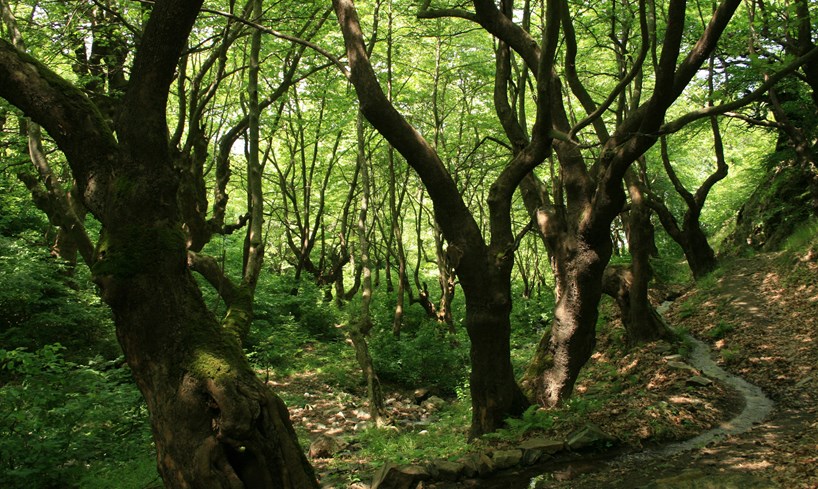The nature of Belasitsa is wonderful and diverse. Have you ever wondered why so..?

Because of the specific geographical location of the Mountain. It is located not only on the border between cultures but on the border between climatic zones. This warm and humid Mediterranean air collides with cool and sometimes severe Continental climate.
Radomir, the highest peak of the mountain rises more than 2,000 meters above the sea and its slopes finish low in the valleys of Struma and Strumeshnitsa. So at the foot of the mountain may already be summer, while high ridges are still covered with snow. And of course places with different climate conditions are home to various plants and animals. Here's another reason why the biodiversity of the Mountain is so rich.
During the Cold War period strict border regime and no-access wide border zone in practice lead to the conservation of the nature of Belasitsa. This also contributes to the great natural wealth that Belasitsa poses today.
Perhaps the most famous plant that occurs on the mountainside is the Sweet chestnut (Castanea Sativa). On the slopes of Belasitsa, where the warm climate prevails over cold and soils are rich, are situated the biggest chestnut forests of the whole Balkan Peninsula. These forests are not only home to many plants and animals. With its numerous applications the chestnut has become part of the lifestyle of the local people.
Only the vascular plants on the territory of the Mountain are more than 1,400 different species! This is 1/3 of all plants found in Bulgaria and almost 40 % of plants occurring in FYR Macedonia!
The fauna of the Mountain is also extremely rich and diverse. Here you can meet from the smallest to the largest members of the animal kingdom. Just butterflies that inhabit the area of the mountain in both countries are more than 150 species, which is 70% of all occurring in Bulgaria. And if we compare small Belasitsa with the British Isles the figures will state that here there are three times more species of butterflies than in the United Kingdom!
Belasitsa is a home to more than 150 different bird species. One of the most interesting among them are the woodpeckers. The presence of these colourful birds, especially rare species such as white-backed and black woodpeckers is an indicator of preserved wilderness. There are nine different species of woodpeckers inhabiting Belasits. How many different species of woodpeckers are found in the whole of Europe? - 10! This is another indicator of the value of Belsitsa forests.
Near the eastern slopes of Belasitsa in Bulgaria is passing an important migration corridor for songbirds. This migratory way is called Via Aristotelis and follows the valley of the Struma River.
Recognition of the rich nature of Belasitsa is the availability of various categories of protected areas and territories in Bulgaria. In 2007 Belasitsa Nature Park was established On the mountainside are also found Kongura nature reserve, the protected areas "Babite" and "Toplishte". The entire Bulgarian part of the Mountain is part of a Paneuropean network "Natura 2000". Belasitsa is a Prime Buterfly Area in Bulgaria. In Macedonia there is only one small-scale nature monument "Smolare Falls" but as in the Bulgarian part of the Mountain landscape and biological diversity is extremely rich.
